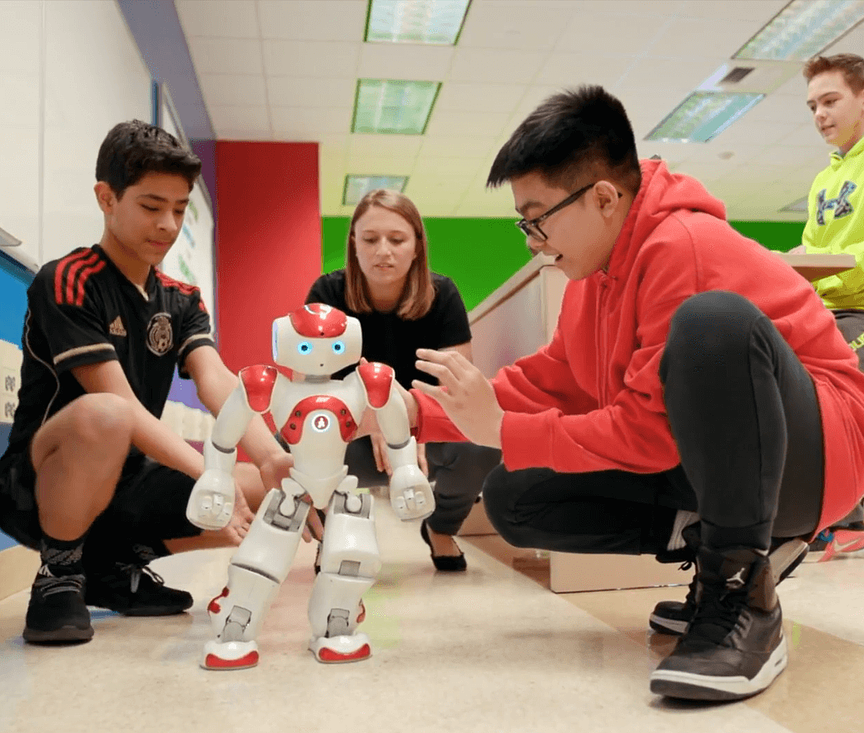It’s no secret that careers in science, technology, engineering, and math (STEM) are the fastest growing industries around the world. In recent years, schools have been embracing STEM education like never before. But the question on educators’ minds is how to best implement and improve STEM practices in their schools. Each school and district has unique needs based on a variety of factors, so a one-size-fits-all strategy is nearly impossible.
Here’s how it works: Schools and districts (known as Pathway Partners) use the Pathway’s framework to determine what successful improvement of STEM education will look like for their institutions. After forming a diverse team of teachers, administrators, and support staff, the Partners take a self-evaluation of their status in the following areas: teacher qualifications, curriculum, instructional practices, assessment and demonstration of skills, family engagement, and real-world connections. The tool then guides the team through the creation of an action plan to help them meet their STEM-related goals.
After completing the Pathway Self-Evaluation, the team formulates a comprehensive action plan that details the specific steps in an implementation plan that your school or district will take to further your STEM-related goals. The tool then generates PDF reports that can be shared with administrators, teachers, and stakeholders.
“The Carnegie STEM Excellence Pathway Tool has provided our OC STEM Ecosystem team with focus and structure in our STEM planning,” said Jennifer Shepard, Assistant Superintendent Educational Services, Huntington Beach City School District, in California. “We were able to be very targeted as many stakeholders and individuals provided input, conducted activities, and created positive actions and outcomes for our educators and students. The Carnegie STEM Pathway Tool resource significantly benefited our team’s actions and supported us in our work toward accomplishing our goals!””
But implementing the action plan is not the end of this process. The Pathway is an iterative tool. At the completion of each action plan timeline, the cycle begins again – a new self-evaluation looks at how your school has improved, advises where to now focus your energy, and generates a new action plan. As a Pathway Partner, you will also join a network of schools and districts that are working to improve STEM education for all.
“The Carnegie STEM Excellence Pathway is opening the door to a more collaborative approach,” said Rob McKenzie, Instructional Technology Specialist and STEM Consultant for BLaST Intermediate Unit 17, a Pathway Provider. “Schools and districts are asking, ‘How can we build capacity, and can we do this together? Can we make our area and our region STEM stronger together?’”
Watch this video to learn more about the Carnegie STEM Excellence Pathway.



